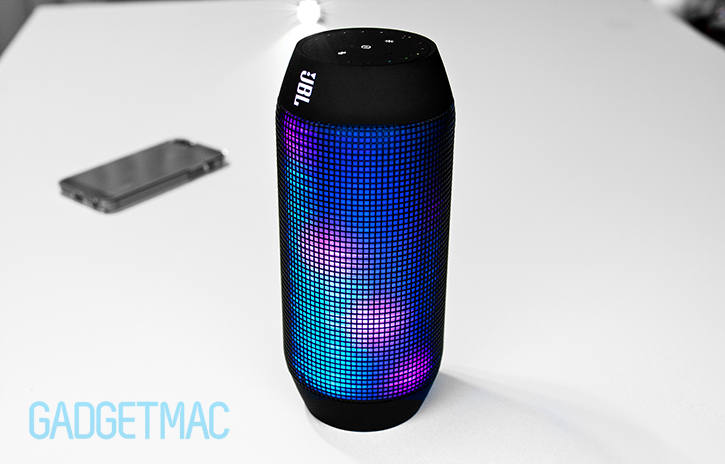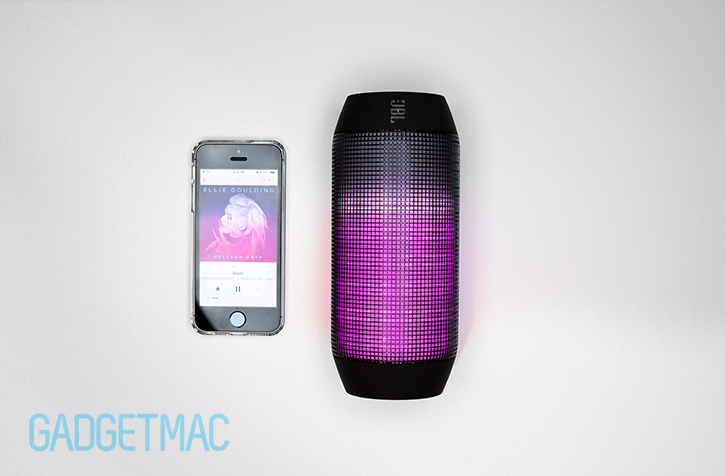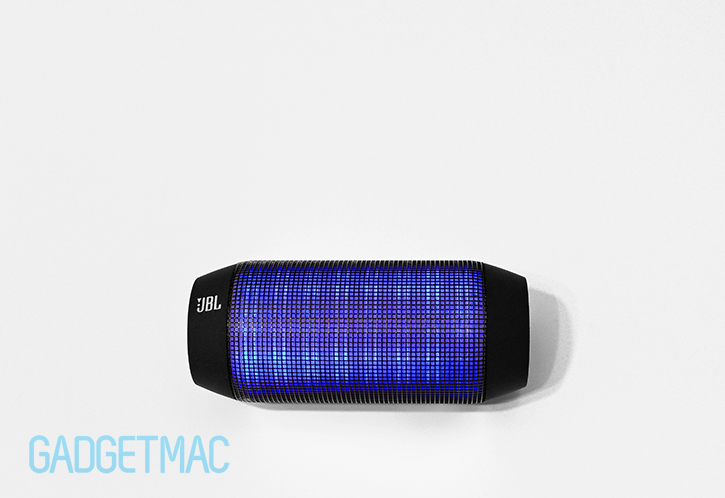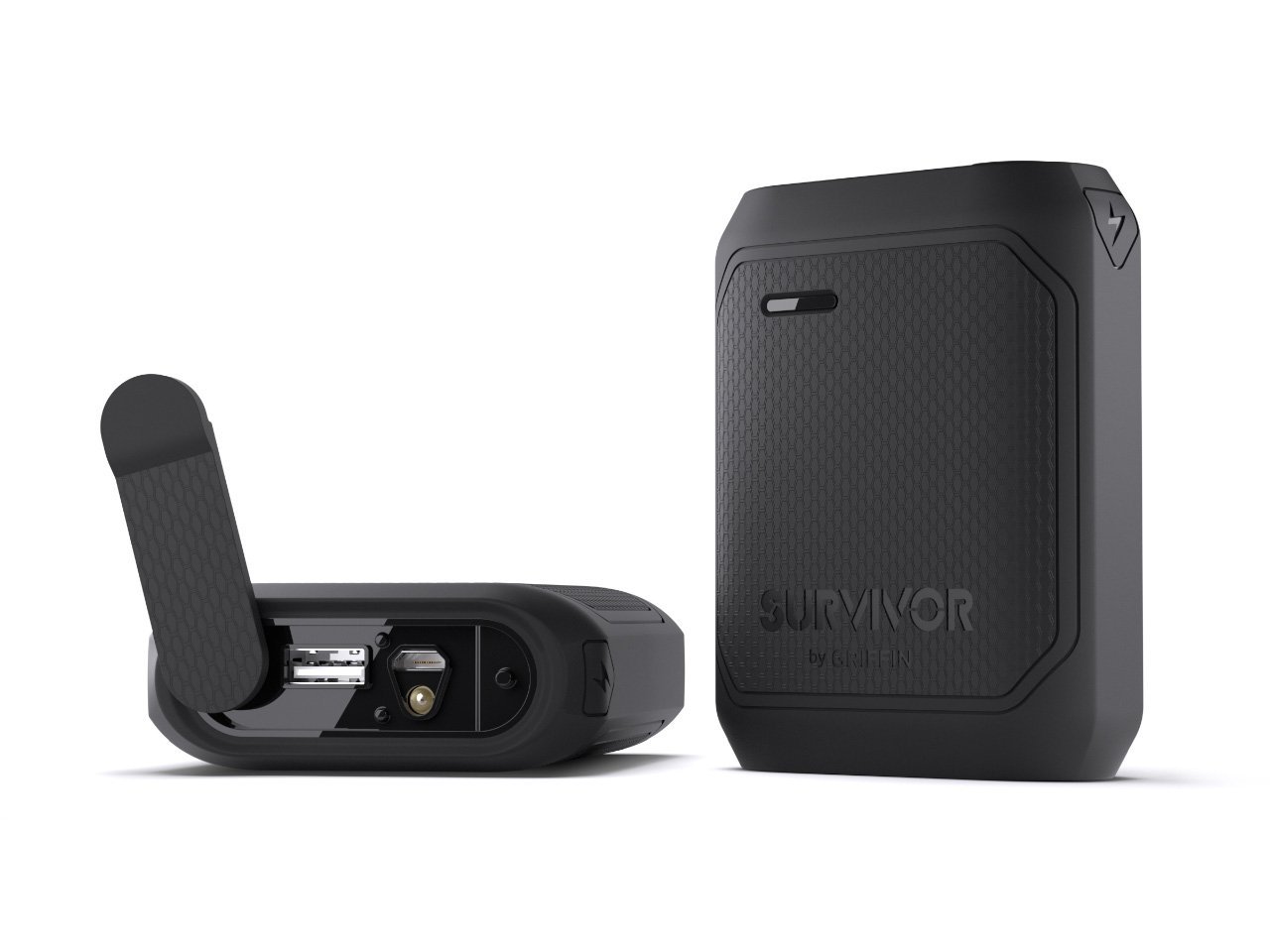JBL Pulse Wireless LED Speaker Review
/Although it never really left, JBL is back in the game with yet another speaker offering. And you guessed it, it's completely wireless, portable and shaped like a 30oz energy drink can. But there's a wicked twist. The new Pulse by JBL comes with its own built-in LED light show that grooves to your tunes as it turns any boring environment into a lit-up party. Or if you're all by yourself, the Pulse does make a great mood lighting gadget you can turn on in your home or anywhere other than your humble abode. More importantly, the Pulse does not disappoint with its audio performance. But should you pick one up when there are some stellar alternatives at similar price points? Be sure to catch our in-depth review where we will put the Pulse and all of its glowing frontage head to head with some of the best wireless portable speakers out there.
JBL's Pulse is hands down the coolest wireless portable speaker we have ever reviewed
The Pulse which has a familiar form factor that is reminiscent of JBL's Charge speaker, is somewhat plain and bashful when you first take it out of its packaging. It's not until you press the power button that a bright beam of light suddenly appears from the bottom as it gradually moves towards the top and then back again. But at that point and time, the beam as changed its color from this powering-on orange looking hue to a white shade denoting the volume level of the speaker. And will then start to randomly display a show of pulsating, moving and fading light show depending on the last light show theme you've selected before your last use.
Speaking of packaging, this time JBL was smart enough to include a proper set of charging options like a detachable micro-USB cable you can use to charge the Pulse straight off of your computer, or directly from the mains using the supplied and very much compact USB power adapter with retractable prongs. We haven't seen one included with any JBL portable speaker so it's a very welcome and useful addition no doubt. Let's see what else $200 gets you.
The Pulse is exactly the kind of speaker Daft Punk would use
The Pulse is easily the most impressive speaker we have tested, but it has more to do with the fact that it offers something different. Something new and fresh. Something truly unique to JBL. I'm talking of course about the elephant in the room which is the Pulse's amazing LED lighting. It may very well be a modern-day lava lamp-esque gadget married with a portable wireless speaker that has it's own energy source. I wouldn't go as far as saying that portable speakers have gone stale in the way they're designed, but there's no denying that JBL pulled off quite a spectacular showmanship with its Pulse speaker. It's not every day you see a speaker covered with an LED display of pulsating lights.
Upon first glance, the Pulse has this black metal pixel-like grid wrapped around it at a semi 360-degrees that will have you believe that underneath it is an actual spread of hundreds of individual LEDs. That’s not exactly the case you see, but rather a matter of a well-executed illusion when looked at up close. What actually goes on is that underneath this speaker grille which looks a little like a mosquito net up close only more robust, is this fabric-like surface that diffuse and evenly distributes the light emitting from the 64 multi-color LEDs inside the speaker while the speaker grille visually splits these clusters of backlight creating a pixel-like effect that looks great. And if you stand a few steps back, the Pulse does a fantastic job selling its otherwise dot matrix-looking LED display.
The LED lights on the Pulse can be configured to show 5 different light show modes by a single touch of a button. Two of them actually react in real-time to the music that is being played. The lights will pulsate in a equalizer theme using bars of lights that raise up and down across the light grid. It may not be as accurate and as detailed as a full-fledge digital equalizer, but it's pretty damn impressive when you consider the limitation of the hardware. It may not light up a room like JBL wants to make you believe that it can in this ad, but it sure does attract everyone's attention with its bright obliviousness and irresistibly cool lighting effects. Not only that, but it obviously sets a tone anywhere you fire it up better than any other portable speaker.
The second equalizer theme uses a single solid bar that pulses to the audio in real-time instead of smaller individual bars. And it's also worth mentioning that you can set the colors to display at alternating hues or simply choose a single color for each of the 4 themes.
When you're using the equalizer light show theme, turning the Pulse on its side quickly transitions from an upright mode to a horizontal mode where you'll see that the equalizer bars actually pulsate according to the orientation thanks to a built-in accelerometer of some kind that senses when you've set the Pulse on its side - which is a really cool and unexpected surprise.
Although there are 5 light show themes in total, the very first theme cannot be adjusted as it is set to display a colorful array of light by default which simply alternates using fading animations and does not react to music being played through the Pulse. It especially makes the perfect light show when you're either hosting a rave or you're simply high and couldn't care less about things that make sense.
At the very top side of the Pulse is where you'll be greeted with a control interface that consists of touch-sensitive LED brightness buttons as well as a set of different color button settings which allow you to set a stationary color of your choice for any one of the 4 available light show themes, as well as a multi-color button that applies a continuous transition of different colors for every light show theme. You will also find that there are backlit power on/off, Bluetooth pairing, and light show theme skip buttons in the middle.
We should note that with the light show theme skip button you can also turn off the LED lights completely without affecting the performance of the wireless speaker. You can pick between standard colors like red, yellow, orange, green, turquoise, and blue using the integrated touch button controls on the Pulse. Interestingly however, the color pink only shows up when setting a particular light show theme with an alternating color hue.
The free JBL MusicFlow companion app you can currently download only on iOS devices, mirrors what is already available to you on the Pulse itself with the exception of a effect transition speed slider which you can use to adjust the speed of the light show animation.
The bottom is a lot like the Charge speaker as it features a light rubber ring enabling you to position the speaker at an upright angle without it falling or sliding. Further more, the Pulse features NFC Bluetooth pairing that works as you'd expect when you tap your NFC-enabled smartphone up against the Pulse's bottom surface which has "NFC" written on it in small letters. The only thing that's missing here is a built-in microphone and speakerphone functionality. You're not going to be able to use the Pulse as a speakerphone to take an incoming call like you can with many other wireless portable speakers.
You can also tilt the Pulse on its side or back where another rubber surface helps stable the otherwise cylindrical shaped device whilst also keeping it from sliding around. Note that when you do position the Pulse at a horizontal angle, the micro-USB charging and audio input ports will get covered and will not be accessible. As long as you aren’t charging the Pulse and are using it wirelessly, it wouldn’t pose any trouble. There's also a 3.5mm audio input next to the micro-USB charging port and a white backlit battery status gauge that lights up when press one of the buttons on the Pulse.
When you use the on-board volume controls on the Pulse itself or from your device, the volume level status displays on the Pule's LED panel surface occupying it entirely which is a really neat touch.
When you first pick up the Pulse you get the sense that it is made really well, but at the same time it doesn’t seem as though durability is its main concern nor is it as impressive as some other equally priced offerings such as the UE Boom and SoundLink Mini speakers. And I’d be reluctant to rough handle it like I could when using something like the UE Boom or even the JBL Charge speaker. The Pulse does have this metal matrix-like grid grille covering the entire LED mesh surface and of course the internal hardware which has a really rigid quality to it that doesn’t flex or bend inwards when your put pressure on it.
It isn’t quite clear whether or not the Pulse could survive a drop or two considering its unique hardware and otherwise simplistic construction. The black plastic portions of the Pulse have this really nice feeling soft-touch rubbery matte coating that gives the speaker a pleasant finish. And in terms of portability and size, the Pulse is one of the bigger and bulkier compact speakers we reviewed solely based on girth, which has mostly to due with that LED light panel integration and that's forgivable.
When it comes down to unadulterated sound quality, the Pulse can be described as an amalgamation of JBL's Charge and Flip speakers in terms of sound performance. It's as loud and powerful as the Charge which means that it easily fills up a large space with sound that's extremely clear and treble-heavy. The Pulse sounds great, but it doesn't offer a complete sound signature that is balanced and rich. Instead, the highs are very bright and full of clarity which is a good thing, while the mids are acceptably present and slightly more detailed compared to the Flip and UE Mini Boom speakers.
Like the Charge, the Pulse features two 40mm speaker drivers under the hood including a passive built-in bass port. And because of that bass port the Pulse sounds a little warmer and punchier than the Flip, however, it still sounds as good as the Charge as far as we can hear. Keep in mind that the bass isn't in any way exceptional. It is good as far as these small speakers go, but it's far from exceptional or even thumpy as we like to refer to great bass.
If you're looking to find a richer sounding portable speaker with thumpier lows and overall better midrange performance, the UE Boom and SoundLink Mini come highly recommended at $200. But don't right off the $100 UE Mini Boom and $100 TouchTone speakers since they are two really good inexpensive alternatives with an impressive, balanced rich audio quality for their diminutive size.
For $200 you can get the Ultimate Ears UE Boom, one of the best performing wireless portable speakers out there. The Pulse by comparison closely matches the UE Boom in terms of clarity with its bright highs and somewhat clean midrange, yet it falls short when you consider low-end bass response and dynamic range including an immersive 360-degree sound output. For a speaker that's as large if not bulkier than the UE Boom, it's quite clear that the Pulse is pretty much a $100 speaker wrapped around with a $100 light show spectacle.
So what about battery life? We know that the UE Boom set an example for incredible battery life as it boasts an industry jaw-dropping 15 hours of wireless audio streaming prowess. Unfortunately however, the same cannot be said about the Pulse. Because in comparison it only does 5 hours. But if you turn off its LED lighting effect completely and only stream music, the Pulse can double its battery life to up to 10 hours of continuous use on a single charge. But doesn't that defeat its purpose? Because unless you're using the Pulse for its LED lighting effects, then we wouldn't remotely dream about recommending it over a speaker like the UE Boom or SoundLink Mini at $200. Without its awesome-looking light show features, we think the Pulse loses nearly half of its value.
JBL's Pule isn't the best portable Bluetooth speaker we have tested at around $200, but it most definitely is the most fun and one of the more unique ones yet. And to many, the Pulse will come off as looking like a great big gimmick with lackluster audio quality. Contrary to such a preconceived notion, the Pulse does offer above average audio quality along with a really unique pulsating lighting effects that liven your listening experience.
The Pulse isn't just another portable wireless speaker, it will be an invaluable centerpiece of your home, office or outdoor party decor whenever you use it. Although it will not light up a room, it’s acceptably bright especially when you can get 5 hours of wireless music streaming with it at full brightness. If you're looking to get a portable wireless Bluetooth speaker and you also happen to be an LED light fanatic, or just a tech fanboy in general, you're going to enjoy what JBL's Pulse has to give. And I mean a lot. But know that you are sacrificing sound quality in exchange for arguably novelty lighting effects when dropping $200. Thus we cannot recommend the Pulse as a portable speaker as there are better options out there for this price.


















































